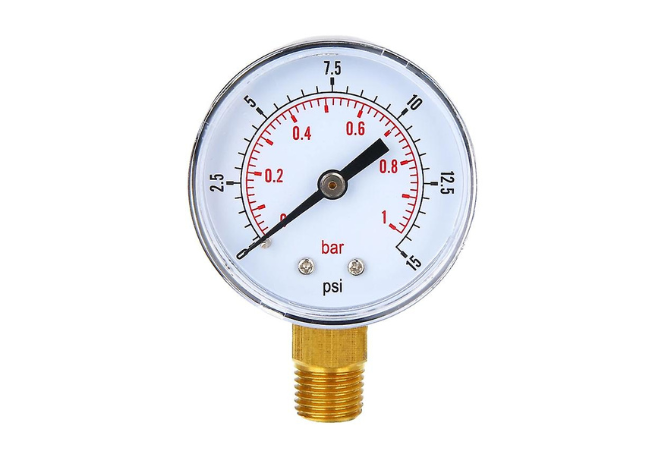What Are Fuses and Why Are They Essential in Every Electrical System?
Introduction: Why Should You Care About Fuses?
Whether it's a home appliance, industrial machinery, or automotive circuitry, fuses are the invisible heroes that safeguard everything powered by electricity. A blown fuse might cause a brief inconvenience, but without them, electrical overloads could result in catastrophic failures, fires, or irreparable damage. In this blog post, we'll dive deep into the world of fuses, explore the different types—including Thermal Fuses, Bottle Fuses, and Resettable Fuses—and uncover why they’re vital for electrical safety and system longevity.
What Is a Fuse and How Does It Work?
A fuse is a protective device used in electrical circuits to prevent overcurrent and short circuits. It contains a metal wire or strip that melts when too much current flows through it, thereby breaking the circuit and halting the power supply. This simple mechanism acts as a first line of defence, shielding both equipment and users from potential hazards.
Key characteristics of fuses include:
-
Low resistance: Ensures normal current flows smoothly.
-
Predictable reaction: The fuse responds swiftly when thresholds are breached.
-
One-time or resettable: Some fuses need replacing after tripping, while others can automatically reset.
Why Use Fuses Over Other Protective Devices?
While circuit breakers are commonly used, fuses still dominate many sectors due to their cost-effectiveness, simplicity, and rapid response. Here’s why engineers and electricians continue to trust fuses:
-
Fast-acting protection for sensitive electronic components
-
No moving parts, reducing the risk of mechanical failure
-
Compact design, ideal for space-constrained installations
-
Affordable and reliable, making them a staple in mass-produced electronics
Exploring Different Types of Fuses
The fuse family includes a wide range of styles tailored to specific needs. Among the many variants available today, let’s focus on three key types: Thermal Fuses, Bottle Fuses, and Resettable Fuses.
Thermal Fuses: Protecting Against Heat-Induced Hazards
Thermal fuses are designed to respond to excessive temperature rather than current. These are widely used in appliances like coffee makers, dryers, and toasters—anywhere overheating might occur.
-
One-time use: Once tripped, they must be replaced.
-
Temperature-specific: Available with precise activation thresholds.
-
Non-resettable: Permanently disconnect the circuit to prevent fire hazards.
-
No external power required: Operate independently from electrical input.
Applications: Household appliances, industrial heaters, HVAC systems, and motor windings.
Bottle Fuses: The Industry Standard in Electrical Panels
Also known as cylindrical or HRC (High Rupturing Capacity) fuses, bottle fuses are used extensively in electrical distribution systems. Named for their distinctive bottle-like shape, these fuses are engineered to handle high voltages and currents.
-
High fault current tolerance: Can interrupt massive surges without damage to surrounding components.
-
Visual indicators: Many come with a blown-fuse indicator for easy identification.
-
Time-delay feature: Supports short-duration inrush currents without tripping.
-
Standardised sizes: Ensures easy replacement and cross-compatibility.
Applications: Consumer units, industrial machinery, transformer protection, and commercial buildings.
Resettable Fuses: The Smart Solution for Reusable Protection
Also called PTC (Positive Temperature Coefficient) thermistors, resettable fuses are polymer-based devices that automatically reset after the fault is cleared. They are gaining popularity in modern electronics due to their longevity and convenience.
-
Auto-reset feature: No need to replace after tripping.
-
Compact and lightweight: Ideal for circuit boards and handheld devices.
-
Long operational life: Reusable for hundreds of cycles.
-
Thermal sensitivity: Resistance increases with temperature to limit current flow.
Applications: USB ports, power adapters, consumer electronics, and automotive systems.
How to Choose the Right Fuse for Your Application?
Selecting the proper fuse requires a careful analysis of several electrical and environmental parameters. Using the wrong fuse not only reduces protection but may also compromise safety.
Consider the following when selecting a fuse:
-
Rated voltage and current: Ensure the fuse can handle your system’s electrical specifications.
-
Breaking capacity: Choose fuses that can safely interrupt fault currents.
-
Response time: Fast-blow fuses for sensitive electronics; time-delay fuses for inductive loads.
-
Environmental conditions: Account for temperature, humidity, and vibration exposure.
-
Regulatory standards: Ensure the fuse complies with regional safety certifications like IEC or UL.
Benefits of Using the Right Fuses
A properly chosen fuse not only prevents disaster but enhances the overall performance and lifespan of your equipment. Here's what the proper fuse offers:
-
Enhanced safety for users and devices
-
Cost-effective protection against circuit damage
-
Prevention of downtime due to avoidable failures
-
Compliance with electrical codes and regulations
-
Optimised system performance through tailored protection
Real-World Applications Across Industries
Fuses find their way into virtually every industry:
-
Consumer Electronics: Mobile phones, laptops, gaming consoles
-
Automotive: Battery circuits, dashboard electronics, electric vehicles
-
Industrial Equipment: Motors, drives, power supplies, PLCs
-
Telecommunications: Servers, routers, base stations
-
Renewable Energy: Solar inverters, battery banks, wind turbines
Each environment demands a specific type of fuse, making versatility a key attribute of modern fuse technologies.
Conclusion: The Small Component with a Massive Role
In the evolving world of electronics and automation, the humble fuse continues to play a pivotal role. From the heat-sensitive thermal fuses in kitchen appliances to the robust bottle fuses in power distribution units and the innovative resettable fuses in our everyday gadgets, this unassuming component is the silent guardian of safe, efficient power usage.
Choosing the correct fuse isn’t just about preventing a blown circuit—it's about protecting your investments, ensuring safety, and maintaining operational reliability. So next time you flip a switch or plug in a device, remember—the fuse is already working behind the scenes to keep everything running smoothly.




Comments
Post a Comment